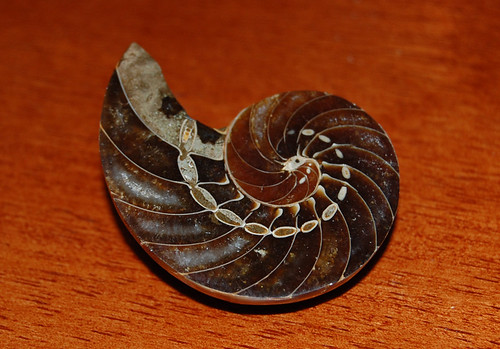An international team of paleontologists has discovered a new animal lurking in the depths of the Royal Ontario Museum's fossil collection: a clawed predator that would have dominated the food chain in a period when all life was underwater.
The team, lead by a Canadian researcher at Sweden's Uppsala University working in collaboration with colleagues from the ROM and the Museum of Natural History in London, are publishing a description of the 500-million-year-old Hurdia victoria in the journal Science today.
Like some large shellfish, this creature had a segmented body, two eyes, a pair of claws and a circular mouth with several layers of overlapping teeth. The Hurdia ranged in size from that of a large shrimp to double that length.
Its distinguishing feature was a hard carapace that jutted out from its head like the brim of a hat. Its function remains something of a mystery since it did not serve as a protective covering for its flesh. The scholars speculate that the Hurdia's carapace may have been used to funnel prey into its mouth.
The description of the Hurdia is based on fossils from the Burgess Shale in British Columbia, a rich deposit that provides evidence of the Cambrian explosion, the sudden proliferation of diverse animal life on the planet 250 million years before the appearance of the first dinosaurs.
The fossil deposit in Yoho National Park, near Field, B.C., was originally discovered in 1909 by American paleontologist Charles Walcott. His finds included a mysterious carapace. The name he chose for the species probably came from nearby Mount Hurd, but he knew that he had found only one part of some crustacean-like creature.
In later years, other parts of Hurdia were misidentified: For example, a fossil of its mouth was believed to be a whole jellyfish. In the 1980s, the ROM discovered more complete examples of the creature's carapace and body, and realized it was much larger than originally thought.
However, it was only recently that Allison Daley, a Canadian PhD student at Uppsala, put together the jigsaw puzzle of fossils that represented flattened versions of the original creature and finally revealed the actual shape.
"They are what I call road kill," her co-author and ROM paleontology curator Jean-Bernard Caron said yesterday as he showed off various samples of the Hurdia fossils. "Those animals were squashed flat in the rocks. ... It takes imagination and patience to see them because the parts are compressed."
Dr. Caron said the discovery is important to scholars' understanding of the development of arthropods, the group of animals with jointed legs that includes crustaceans, spiders and insects.
The segmented body of the Hurdia, for example, is the feature that would have eventually developed into the arthropods' limbs. Both during the Cambrian period and today, arthropods represent the biggest group of animals.
The Hurdia is the third large predator that scholars have identified in the Burgess Shale, creatures that would have gobbled up the tiny proto-vertebrates that are the ancestors of today's mammals.
The ROM has the world's largest collection of Burgess Shale fossils and is currently showing a small exhibition of them to mark the centenary of Mr. Walcott's original find in 1909. Dr. Caron, who says the Hurdia discovery is a testament both to continuing exploration in the area and to the importance of maintaining collections, will lead another dig there next year.
Source Citation
"Prehistoric superpredator discovered among ROM fossils.(Science)(HURDIA VICTORIA)." Globe & Mail [Toronto, Canada] 20 Mar. 2009: A8. Popular Magazines. Web. 26 Feb. 2010.
Document URL
http://find.galegroup.com/gps/infomark.do?&contentSet=IAC-Documents&type=retrieve&tabID=T004&prodId=IPS&docId=A195966807&source=gale&srcprod=PPPM&userGroupName=broward29&version=1.0
Gale Document Number:A195966807

 (Album / Profile) http://www.facebook.com/album.php?aid=10034&id=1661531726&l=0b77e26203
(Album / Profile) http://www.facebook.com/album.php?aid=10034&id=1661531726&l=0b77e26203


No comments:
Post a Comment